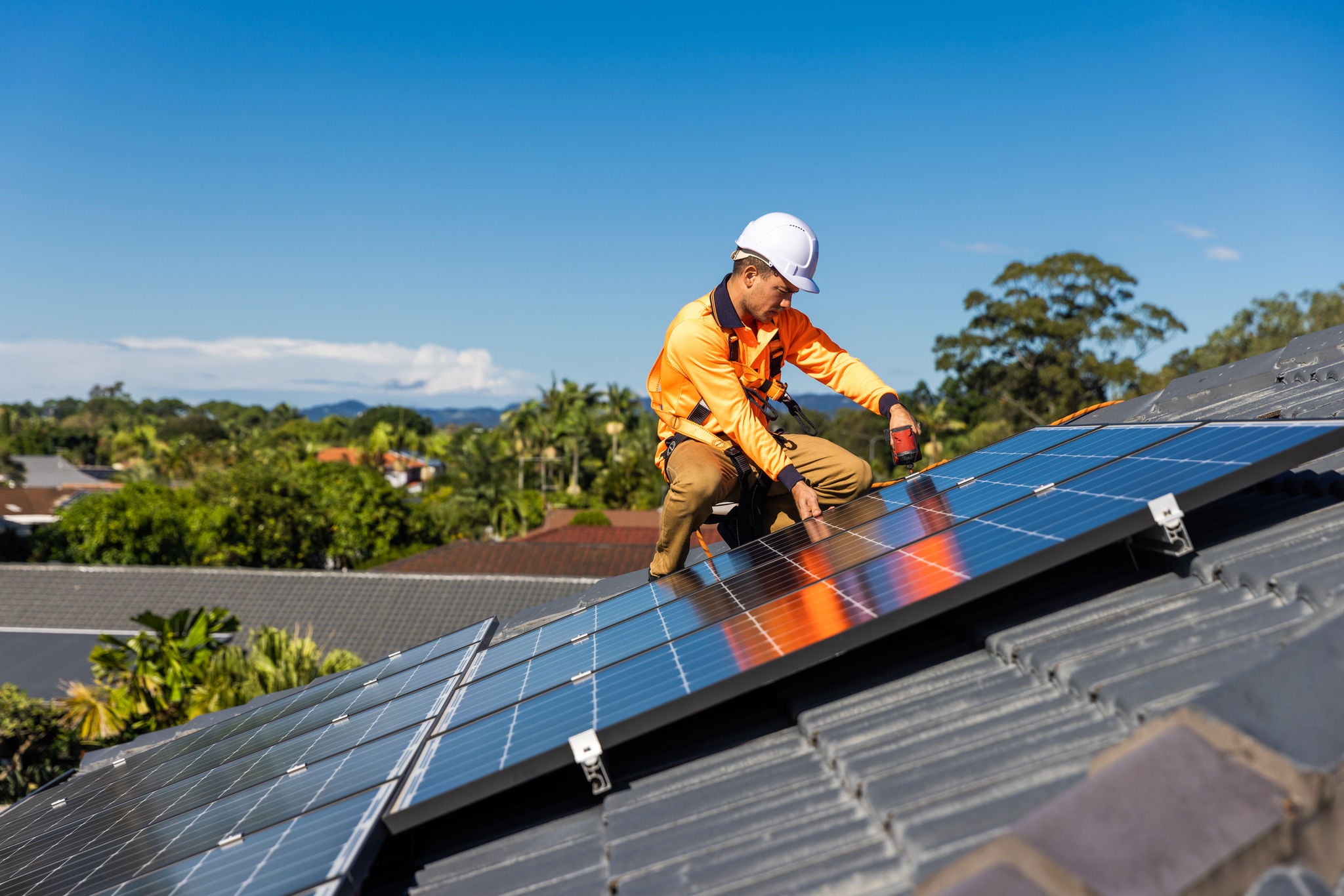
Solar
Explore Alinta Energy’s solar plans and feed-in tariffs. Track your usage, boost savings, and make the most of your solar investment with ease.

Households and small businesses may be eligible for a discount on the cost of installing battery systems, as the government continues to push towards new energy.
From 1 July 2025, the $2.3 billion program will provide a discount of at least 30% on the purchase and installation of batteries for those looking to maximise their solar set up.
Eligible battery storage systems range from 5 to 50 kilowatts hours (kWh), and while that's small-scale, a 6 or 7 kWh battery can help take full advantage of rooftop solar.
Batteries act as a reserve to save power generated during the day, so owners can tap into the battery during the evening at peak time. They can also work as a stored supply during a blackout - just like a portable power bank for when your phone runs out of charge.
The Government's modelling suggests that households with existing rooftop solar could save up to $1,100 from their power bill each year. New solar customers with advanced systems could potentially save more, however they'd need to think about the cost of starting from scratch.
Batteries are certainly not cheap. Households that are interested in investing in a battery will need to set aside up to $9,000 for a 6 kWh battery, and that's not including any installation. Purchasing an entirely new solar system with battery will likely cost twice as much.
| What will the discount look like? | |
|---|---|
| The subsidy will provide a maximum of $372 per kWh of usable battery capacity. This is expected to be reviewed annually, and the actual reduction will likely be slightly less when accommodating administrative fees. | |
| Battery kWh | Estimated maximum discount |
| 6 | $2,232 |
| 8 | $2,976 |
| 10 | $3,720 |
While there's money to be saved long-term, to qualify for the deal, the batteries must be compatible with VPPs (Virtual Power Plants). Electric vehicle battery systems are also not eligible as part of this subsidy.
A VPP is when a household has a solar and battery system solution, and this is controlled virtually by a third party (for instance an energy retailer). When the energy grid is under stress, the VPP can be instructed to push the battery's saved power back into the grid.
The government undoubtedly wants more VPPs, and they'll argue that owners of batteries are well compensated for the energy they distribute back to the grid. More VPPs also have the potential to lower peak prices across the market over time.
The case for getting a battery will differ from home to home. It will also depend on people's energy habits and consumption, and whether they have current rooftop solar. Simply put - a battery could save a household money, and bigger batteries bring bigger discounts. Those savings take time, however, and it's essential to shop around and weigh up the initial installation costs.
More information can be found on the Australian Government website.